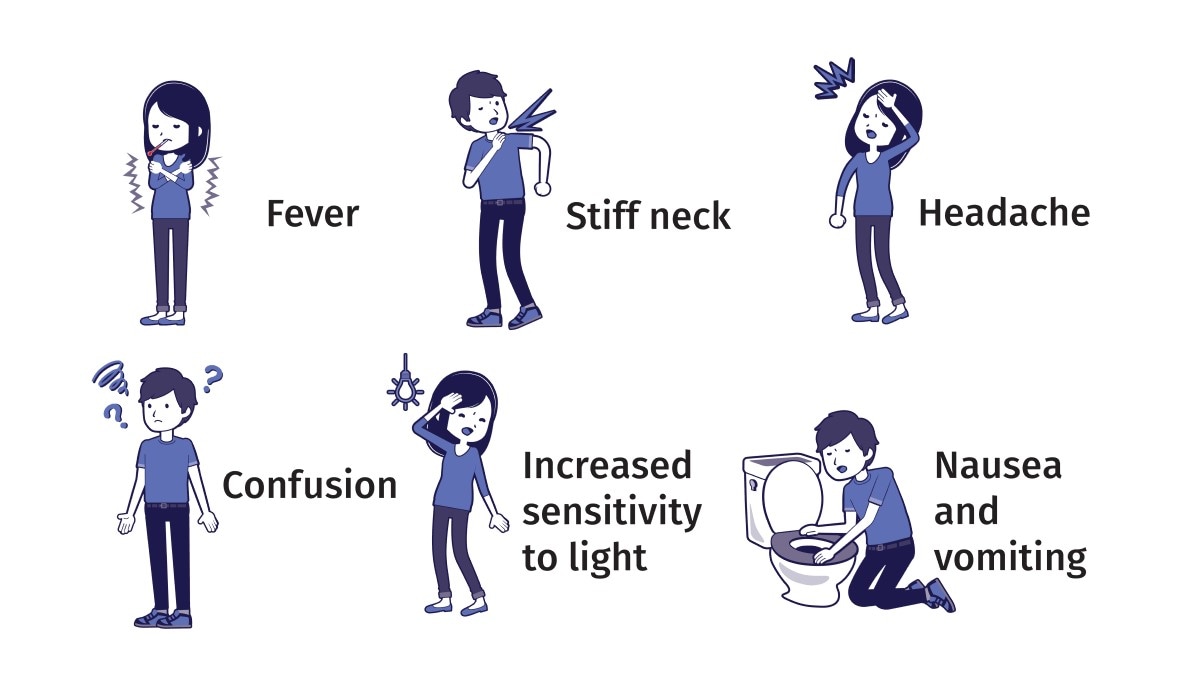Key points
- Meningitis and bloodstream infections are the two most common types of meningococcal infections.
- Both are serious and can be deadly in a matter of hours.
- Symptoms of meningococcal disease can first appear as a flu-like illness and rapidly worsen.
- Seek medical attention immediately for symptoms of meningococcal disease.

Symptoms

Meningococcal meningitis
The most common symptoms of meningitis include:
- Fever
- Headache
- Stiff neck
There are often additional symptoms, such as
- Altered mental status (confusion)
- Nausea
- Photophobia (eyes being more sensitive to light)
- Vomiting
Symptoms in babies
Babies may not have the classic symptoms listed above. If they do, it may be difficult to notice the symptoms.
Instead, babies may
- Appear to be slow or inactive
- Be irritable
- Feed poorly
- Have a bulging anterior fontanelle (the soft spot of the skull)
- Have abnormal reflexes
- Vomit
Bloodstream infection
Symptoms of a bloodstream infection may include:
- Cold hands and feet
- Diarrhea or nausea with or without vomiting
- Fatigue (feeling tired)
- Fever and chills
- Rapid breathing
- Severe aches or pain in the muscles, joints, chest, or abdomen (belly)
- In the later stages, a dark purple rash
Complications and when to seek help
Even with antibiotic treatment, 10 to 15 in 100 people with meningococcal disease will die.
One in 5 survivors will have long-term disabilities, such as:
- Brain damage
- Deafness
- Loss of limb(s)
- Nervous system problems
